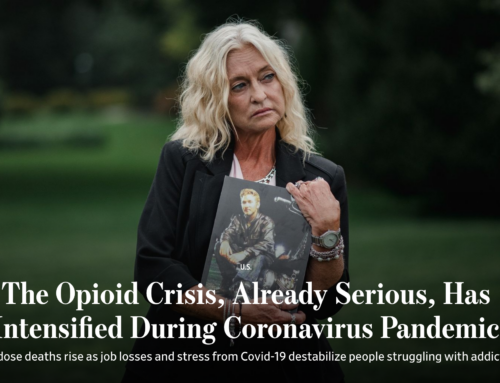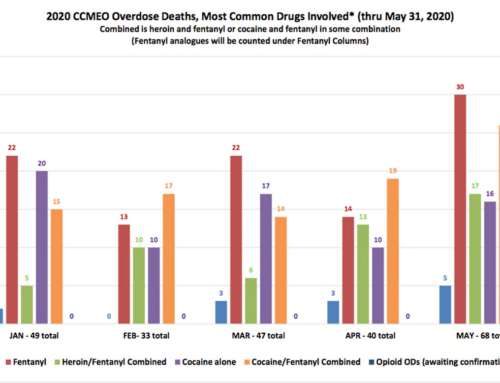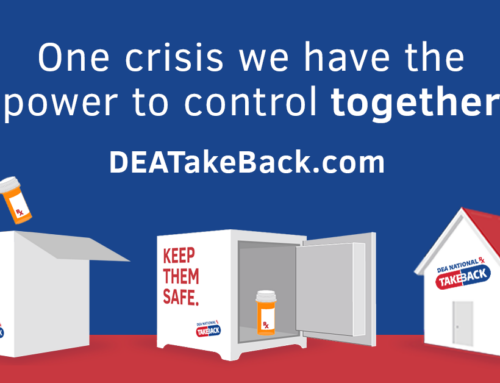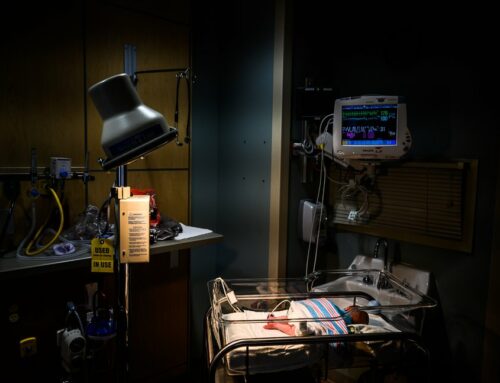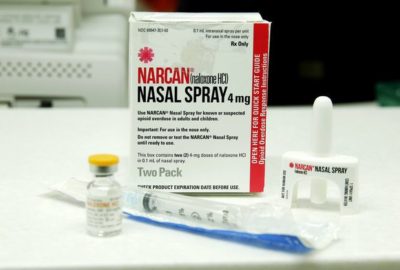 CLEVELAND, Ohio — In Ohio, a state hit hard by the heroin and fentanyl overdose epidemic, it should be easy to get the overdose-reversal drug, naloxone, at most pharmacies without a prescription.
CLEVELAND, Ohio — In Ohio, a state hit hard by the heroin and fentanyl overdose epidemic, it should be easy to get the overdose-reversal drug, naloxone, at most pharmacies without a prescription.
A 2015 law allows pharmacists across the state to use a standing order signed by a doctor to dispense the lifesaving medication, most commonly known by the brand name of the nasal spray version, Narcan, to customers who do not have their own prescription. A standing order can be signed by a doctor (whether one employed by the pharmacy chain, a local physician or the medical director of a health department, for example) and used for anyone who requests the medication, in the same way that vaccines are dispensed.
Almost every U.S. state has a similar law in place today, either allowing doctors to prescribe naloxone to patients they do not have a relationship with, or allowing for standing orders at pharmacies.
About 77 percent of the Ohio’s pharmacies in 87 of the state’s 88 counties now have standing orders in place and have registered with the State of Ohio Board of Pharmacy to provide naloxone without a prescription (for a complete list, check here.)
But the ease of getting naloxone or Narcan depends on which drug store chain or pharmacy you ask.
A Plain Dealer review of 275 pharmacies in three Northeast Ohio counties that have signed up with the state’s board of pharmacy to have the drug available found that the majority, 70 percent, had the medication in stock when we contacted them during the second week of April. Less than two-thirds (60 percent) both had the drug in stock and the person answering the call in the pharmacy knew that no prescription was required.
When asked about prescription requirements, surveyed pharmacies varied widely in their responses:
- At about 1 in 5 pharmacies overall, staff who answered the phone said a prescription for Narcan was needed.
- Only a quarter of Marc’s locations in the surveyed area had the drug in stock and available without a prescription. Six of the chain’s 17 locations, or 35 percent, said a prescription was required.
- At the 12 Walmart locations we contacted, staff who answered pharmacy phones said a prescription was required at 8 locations, or 67 percent.
“We don’t want anybody to be turned away for lack of a prescription when it’s not required,” said Terry Allan, Cuyahoga County health commissioner, when informed of the survey results. “That’s an opportunity to save a life.”
Allan said he’s encouraged by the number of pharmacies that stock naloxone, but sees room for improvement in how the different pharmacy chains educate their staff about the standing order.
That training is not now required by state law. Only pharmacists and pharmacist interns are required to be trained on how to dispense the drug and counsel patients or customers. The State of Ohio Board of Pharmacy on Monday will consider new draft rules that would mandate this training, said Cameron McNamee, director of policy and communications after learning about the survey findings.
“At the time of [the law’s] drafting, we assumed that such staff training would be provided as it is a service the pharmacy offers,” he said.
Training of staff appeared to be uneven across pharmacy chains, however.
At 45 Walgreens locations contacted, for example, everyone who answered the phone knew that customers could get naloxone via the state’s protocol and did not need their own prescription. Nearly every store, 93 percent, had naloxone or Narcan in stock.
But at Rite Aid and Walmart pharmacy locations surveyed, the drug was less often available and staff more often reported the need for a prescription. At eight of 12 Walmart locations Narcan was available, but at only three locations where the drug was in stock did staff who answered the phone know it could be picked up without a prescription.
At one Walmart location, a technician refused to ask a pharmacist for clarification on the store’s policy for providing Narcan without a prescription, stating “I’m a pharmacy technician so I know what’s required.”
In a statement issued Thursday in response to the survey results, Walmart said that associates answering the phone at pharmacies may not be pharmacists, and that to date, its naloxone and Narcan training has focused solely on pharmacists.
“[W]e will expand this training to non-pharmacist associates working in the pharmacy,” said spokeswoman Erin Hulliberger in the statement. “This training will also include direction to engage a pharmacist on all naloxone/Narcan inquiries.”
The chain said it also will reinforce with its locations that pharmacies should have at least one dose of naloxone available to dispense at all times.
At Rite Aid’s 38 locations listed with the pharmacy board, about half had naloxone or Narcan in stock. But at 15 of the surveyed locations, or 39 percent, staff who answered the phone said a prescription was required to get the medication. About a third of the chain’s pharmacies surveyed both had the drug in stock and correctly stated that no prescription was required.
“Naloxone can be dispensed without a prescription at all Ohio Rite Aid pharmacies. We are looking into the findings of this report and remain committed to ensuring our customers and communities are able to access naloxone,” said Rite Aid spokeswoman Ashley Flower in an emailed statement.
Marc’s did not respond to a request for comment.
Hospital pharmacies also varied in their responses when surveyed. At the Cleveland Clinic’s nine pharmacy locations, naloxone was in stock at seven and at all pharmacies staff who answered the phone said it was available without a prescription. At MetroHealth’s nine locations, the drug was in stock, but calls to several of the locations were routed through a single switchboard. Staff who answered the phone on three separate occasions said a prescription was required to get naloxone.
A MetroHealth spokeswoman said Friday that naloxone is available without a prescription at all its pharmacy locations, and the confusion among staff who answered the central switchboard number is being addressed.
When challenged as to whether a prescription was needed, most pharmacy staff members who checked with a pharmacist came back with the right information. At one Drug Mart location, a technician who answered the phone knew the standing order policy better than the pharmacist. “The pharmacist who’s here right now says you need one, but I’m pretty sure that there’s a standing order and you don’t,” she said. “I’m not in charge though.”
Some locations had never filled a request for Narcan, but were happy to research how to do so, and some staff members were surprised to learn that it was so easily available.
McNamee, of the board of pharmacy said that all pharmacy staff members need to know how to correctly answer questions about naloxone when customers call, not just pharmacists.
“The pharmacies know that technicians will be answering the phones, so their training should incorporate technicians,” McNamee said. “For any of them to say you need a prescription is disappointing.”
McNamee said the pharmacy board “takes the issue very seriously” and on Thursday afternoon sent out an email communication to all pharmacists, pharmacy interns and pharmacies licensed by the board in response to the survey about the standing order protocol and the need to educate staff members.
“Unfortunately, the Board continues to receive reports of pharmacies that have either turned away customers, even though the pharmacy notified the Board that they offer this service, or are told a prescription is required to obtain the naloxone,” the E-News update said. “It is strongly recommended that a pharmacy that has submitted notification to the Board that they are dispensing naloxone pursuant to a physician protocol train all staff (including pharmacy technicians and other staff that regularly interact with the public) about availability of naloxone without a prescription.”
McNamee said the board has also contacted individual pharmacy chains.
The board on Monday is also considering a change to the language of its naloxone prescribing rules that makes it clearer that pharmacies that have signed on to provide the drug without a prescription must indeed do so.
“When we first adopted the rule a couple years ago we didn’t think this would be an issue,” McNamee said, referring to the need to reinforce the obligation. “It’s sad that we’ve had to come to this, but I think it will also maybe give us a little more leverage as we move forward.”
Widespread confusion
Our survey revealed that there was widespread confusion among pharmacy staff, including pharmacists, about some of the logistics of filling a prescription for Narcan using the state’s standing order protocol, especially when it came to re-stocking the medication and whether or not insurance would pay for some or all of the cost.
At some locations that did not currently have the drug in stock, staff members, including pharmacists, stated that they could only order it if they had a prescription. In some cases, staff said this prescription had to be for the person the drug would be used on. Neither are true, according to McNamee.
“There is nothing that requires them to have a prescription in order to restock their supply. They should have a supply on hand [no matter how minimal] in order to provide this service,” he said.
There was also confusion about whether or not a prescription was required in order for insurance to pay for Narcan. Ohio’s naloxone prescribing law allows pharmacies to create a “prescription form” which can be used to bill insurance, according to McNamee.
Coverage varies based on insurer and patient assistance programs, and coupons in use at different pharmacy chains, but the cost can be as low as a prescription copay. Without insurance, prices varied from about $80 to $195.
How best to get Narcan
Given the variable training of pharmacy staff, The Plain Dealer found that how you ask about naloxone when calling a pharmacy makes a difference.
Here are some tips to help find the drug at a pharmacy near you:
- Ask for Narcan: Many pharmacy staff members had trouble when asked about the availability of the drug by its generic name, naloxone. “Can you spell that?” asked several technicians. “You want suboxone?” asked a technician at a CVS in Cleveland. Specifying the brand name Narcan or explaining what the medication is used for (“the opioid overdose reversal drug”), cleared up confusion in almost every case.
- Ask for a pharmacist: In most cases where a pharmacy staff member provided incorrect information about the standing order, or even the availability of the drug, asking to verify with a pharmacist led to obtaining the proper information.
- Report problems: If you’re turned away, or have problems accessing the medication without a prescription, you can report it to the State of Ohio Board of Pharmacy by visiting www.pharmacy.ohio.gov/complaint.
- Project DAWN: If you’d rather not get naloxone at a pharmacy, there are free doses available via the state’s Project DAWN (Deaths Avoided With Naloxone) locations. You can find a list of sites here.
For a full map of Ohio pharmacy locations that dispense naloxone without a prescription, check here or see the map below.
ORIGINAL ARTICLE: http://www.cleveland.com/healthfit/index.ssf/2018/04/life-saving_overdose_antidote.html

